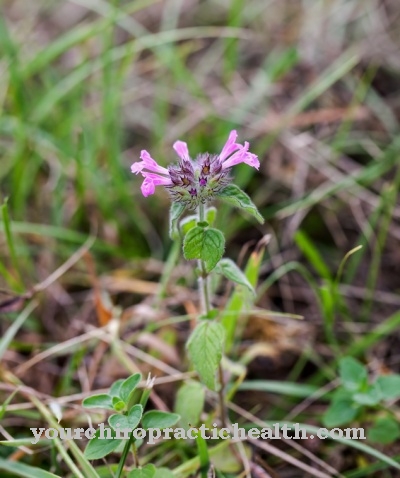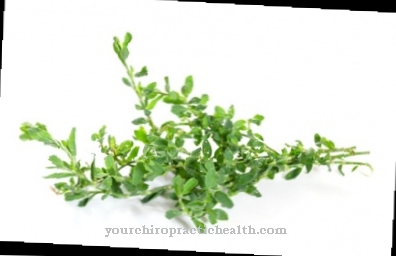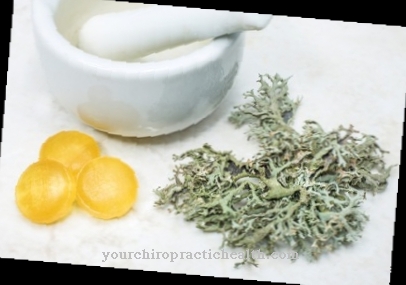Chokeberry look strange at first glance and are a terrific addition to the garden and the menu at second glance. The aromatic berries are a real treasure for the home kitchen and promote health through vitamins and valuable antioxidants.
Occurrence and cultivation of chokeberries

The chokeberry rightly bears its name: the black and red fruits are small in size and show a tiny core in the juicy, shiny red flesh. Its bright white flowers are also reminiscent of those of the apple tree. The fruits of the chokeberry are harvested in late summer and the leaves, which turn intensely red in autumn, offer a spectacular play of colors. The chokeberry makes hardly any demands on the soil or location and tolerates both sun and partial shade.
It is an attractive ornamental wood in the home garden that provides very healthy fruits. The chokeberry was originally a North American wild shrub whose vitamin-rich fruits were used by the Indians as winter supplies. The botanist Ivan Michurin brought the shrub to Russia around 1900 and researched its beneficial effects there.
Effect & application
Chokeberries can be prepared in a very varied way and are a welcome addition to the menu because of their highly effective vital substances. The flesh of the wild chokeberry tastes sweet and sour and a little bit tart, the cultivars have a milder taste. The fruits of the wild varieties can be enjoyed fresh in smaller quantities, but have a slightly laxative effect due to the amygdalin they contain. Crushed and heated, the amygdalin content of the wild berries is harmless.
Chokeberries are usually available in the shops in dried form and form a good basis for a variety of delicious dishes. As a healthy ingredient for yoghurt and quark dishes or as an interesting alternative to raisins, they can be used very well in muesli. Combined with sweet fruits such as bananas, apricots and pears, fine jams or jellies are created. Chokeberries can also be used in cakes, muffins or other baked goods.
Aronia fruit bars are a quick and healthy source of energy. If you want to make your own fruit bars, mix chokeberries with oat flakes and puffed rice, add raspberries and coconut flakes and mix a mixture with honey or maple syrup, which is dried in the oven and then cut into bars. The berries are also a real treat with the chocolate fondue: Melt the dark chocolate in a water bath and coat the dried chokeberry with it. Pureed chokeberries, beaten through a sieve and mixed with milk, cream and honey make a vitamin-rich milkshake.
Chokeberries are also perfect as an ingredient in smoothies. In summer, an intensely purple thirst quencher made from apple juice, mineral water and a dash of aronia nectar is refreshing. Even interesting main dishes can be prepared with chokeberries: As an alternative to lingonberries, chokeberry jelly is an excellent accompaniment to game dishes. After the menu, you can enjoy aronia wine, which is available as a semi-dry dessert wine. Other products from the chokeberry are offered with tea made from the pomace of the berries and bath salt.
Those who do not primarily have culinary delights in mind, but are primarily concerned with the health-promoting properties of aronia, can purchase aronia powder, lozenges or capsules. These contain the vital ingredients of the chokeberry in concentrated form.
Importance for health, treatment & prevention
The aronia berries are not only tasty and versatile, they are, above all, an extraordinarily rich source of healthy vital substances. In addition to folic acid, minerals and vitamins, chokeberries contain a particularly large amount of the highly effective phytochemicals anthocyanins. Anthocyanin is a color from the group of flavonoids and is responsible for the red to dark purple color of the chokeberry. Flavonoids serve to protect the plant from disease, excessive solar radiation and ionizing radiation.
Compared to other berries, the chokeberry contains a remarkable amount of this valuable ingredient. There is ten times as much anthocyanin in the aronia as in red grapes and around four times more than in black currants. The effect of the bioflavonoid anthocyanin on the human organism is extremely interesting for health care and disease prevention. Scientific studies show antiviral, antibacterial, anti-carcinogenic and anti-inflammatory effects.
As a so-called radical scavenger, the anthocyanin in the chokeberry binds free radicals that attack the body's cells. Too many of these harmful oxygen compounds disrupt the cell metabolism and cause “oxidative stress” in the cell. This is promoted by an unhealthy lifestyle, inflammation in the body and harmful environmental influences. The more cells in the body are attacked in this way, the more likely health problems are to arise. This accelerates the aging process of the cells, which can lead to serious illnesses.
The negative effects of free radicals can be positively influenced by the antioxidant effects of the chokeberry. It strengthens the immune system, protects the stomach and liver, has a balancing effect on blood sugar levels and can help prevent diabetes mellitus. The UV protection present in the anthocyanin dye helps to keep skin looking fresher. The chokeberry has beneficial effects on the entire cardiovascular system, eyesight and blood vessels. The power of its ingredients makes the chokeberry a highly effective "fountain of youth" for the whole body.




























